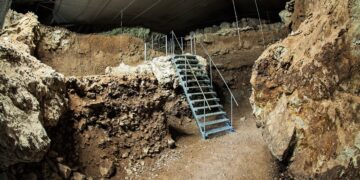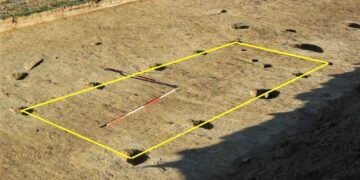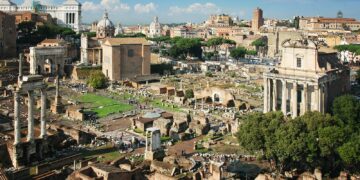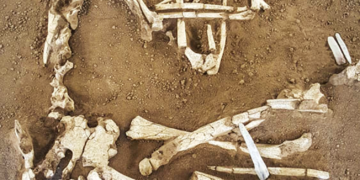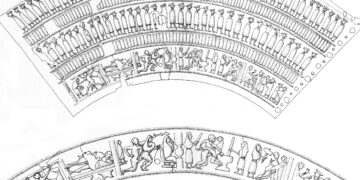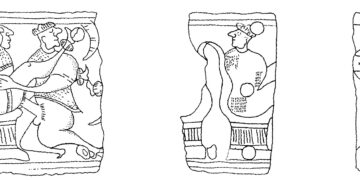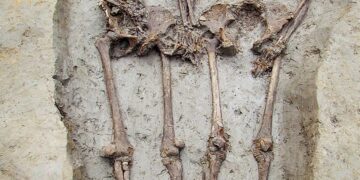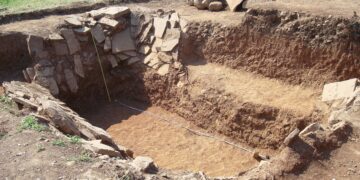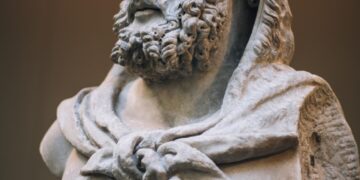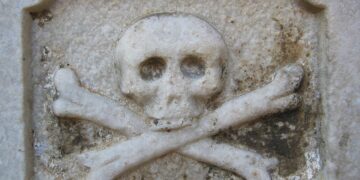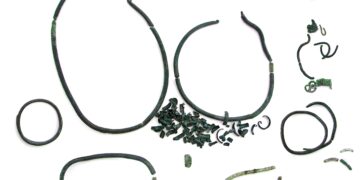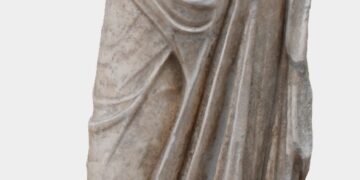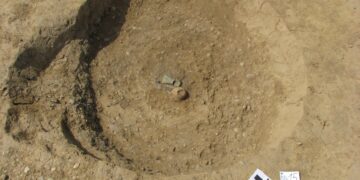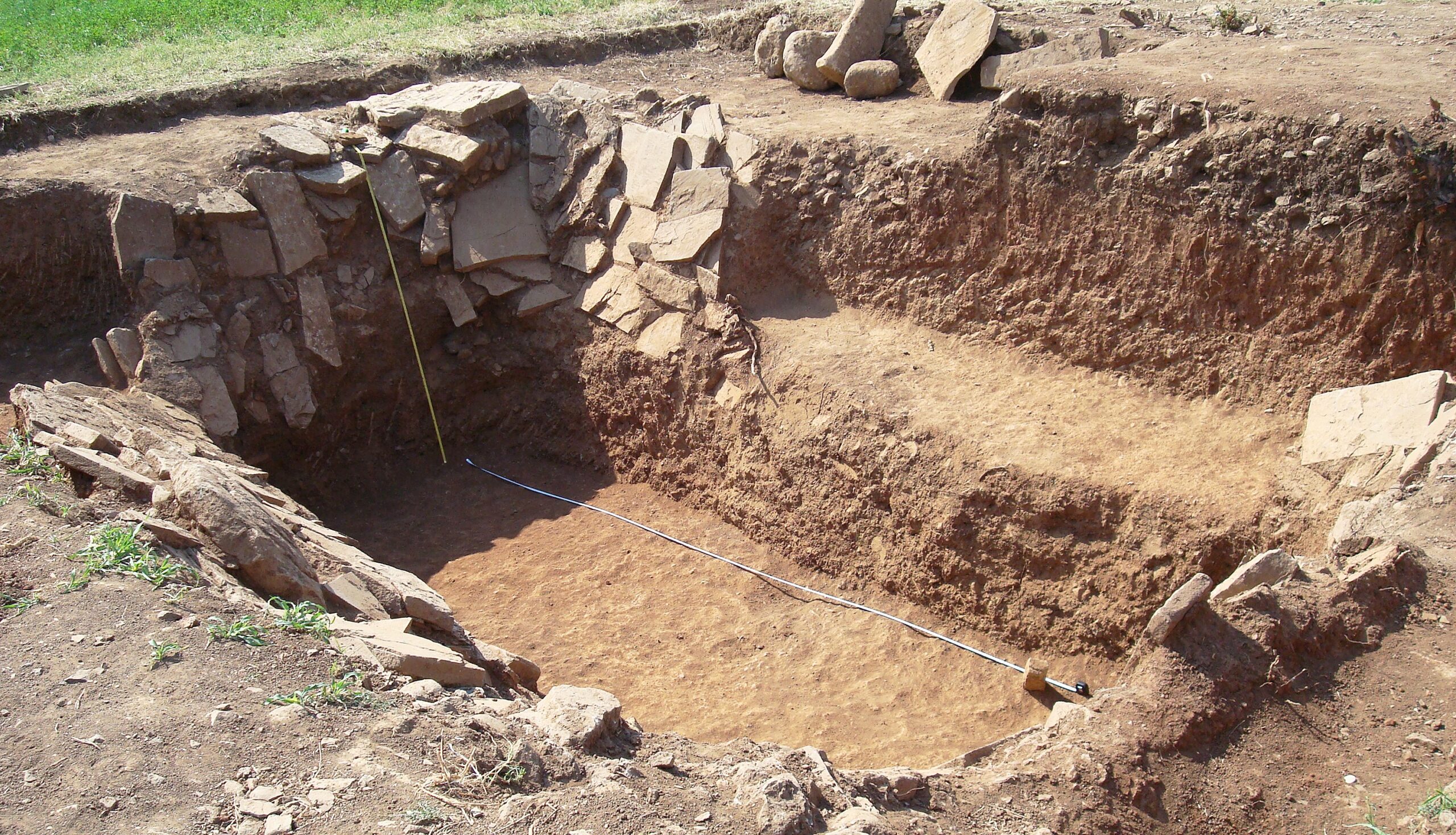In almost every medium of Greek art of the 6th century BC the hoplite and warfare feature prominently, as military service was a primary distinction of citizenship – a mark of status and often of wealth, as well as a means of attaining glory. In the hinterland of the classical world, it seemed that in this period a new aristocracy was created, an aristocracy mirroring the Homeric heroes. Especially in Ancient Macedonia, lavish decorations of gold and items made of silver adorned the rich panoply of these warriors.
Perhaps one of the most exceptional burials belonged to the warrior found in a large tomb near the village of Koreshnica, near the town of Demir Kapija in Northern Macedonia, who died at the beginning of the 5th century BC. His grave goods did not include only his personal belongings, but a multitude of military equipment such as several helmets, shields and spears, bronze vessels and pottery and most important a ceremonial scale armour, partly produced from silver scales. Unfortunately, the archaeologists were able to save only a minor proportion since the burial was discovered by the foreign military stationed at that time in Macedonia and left the country with diplomatic mail.


